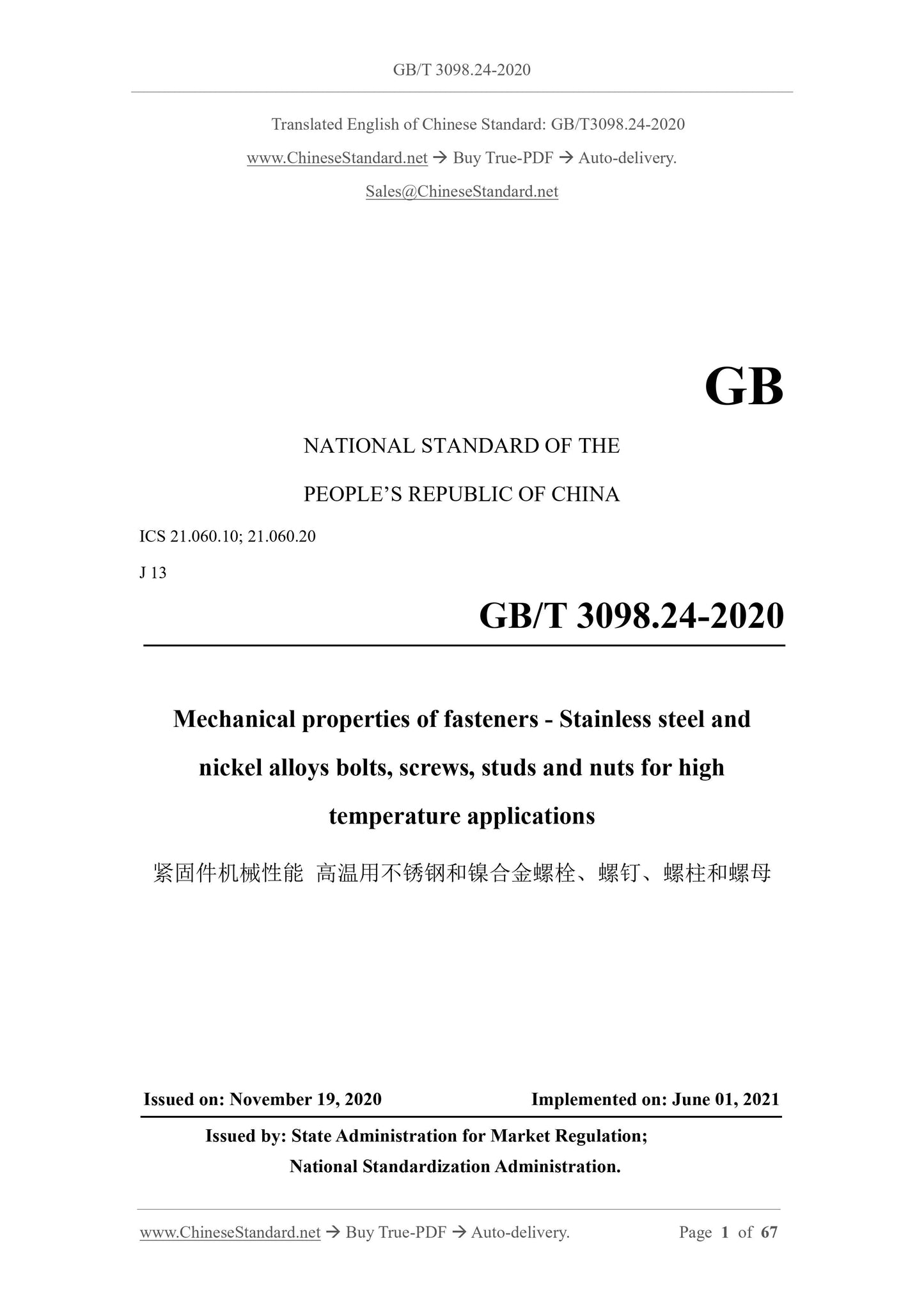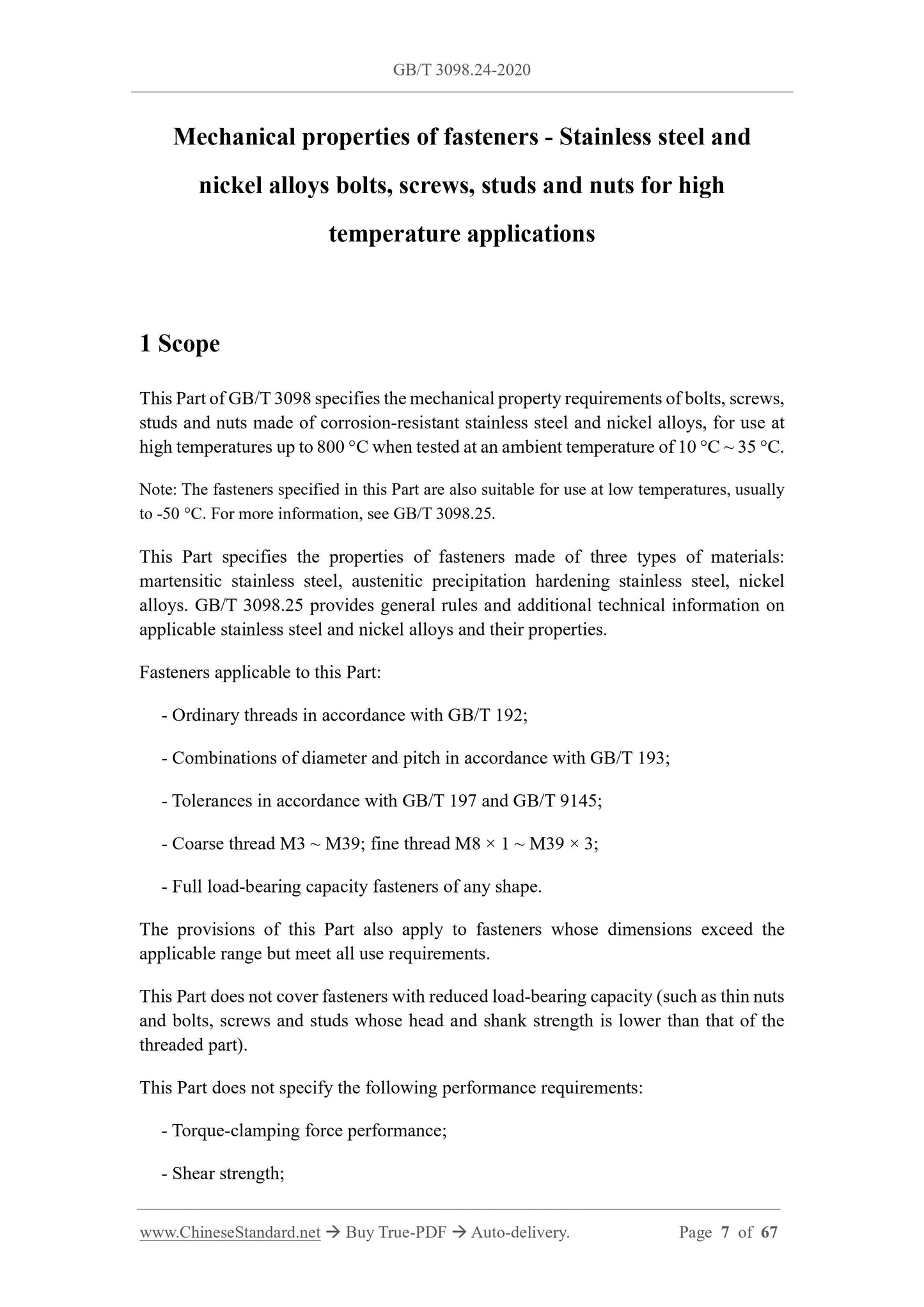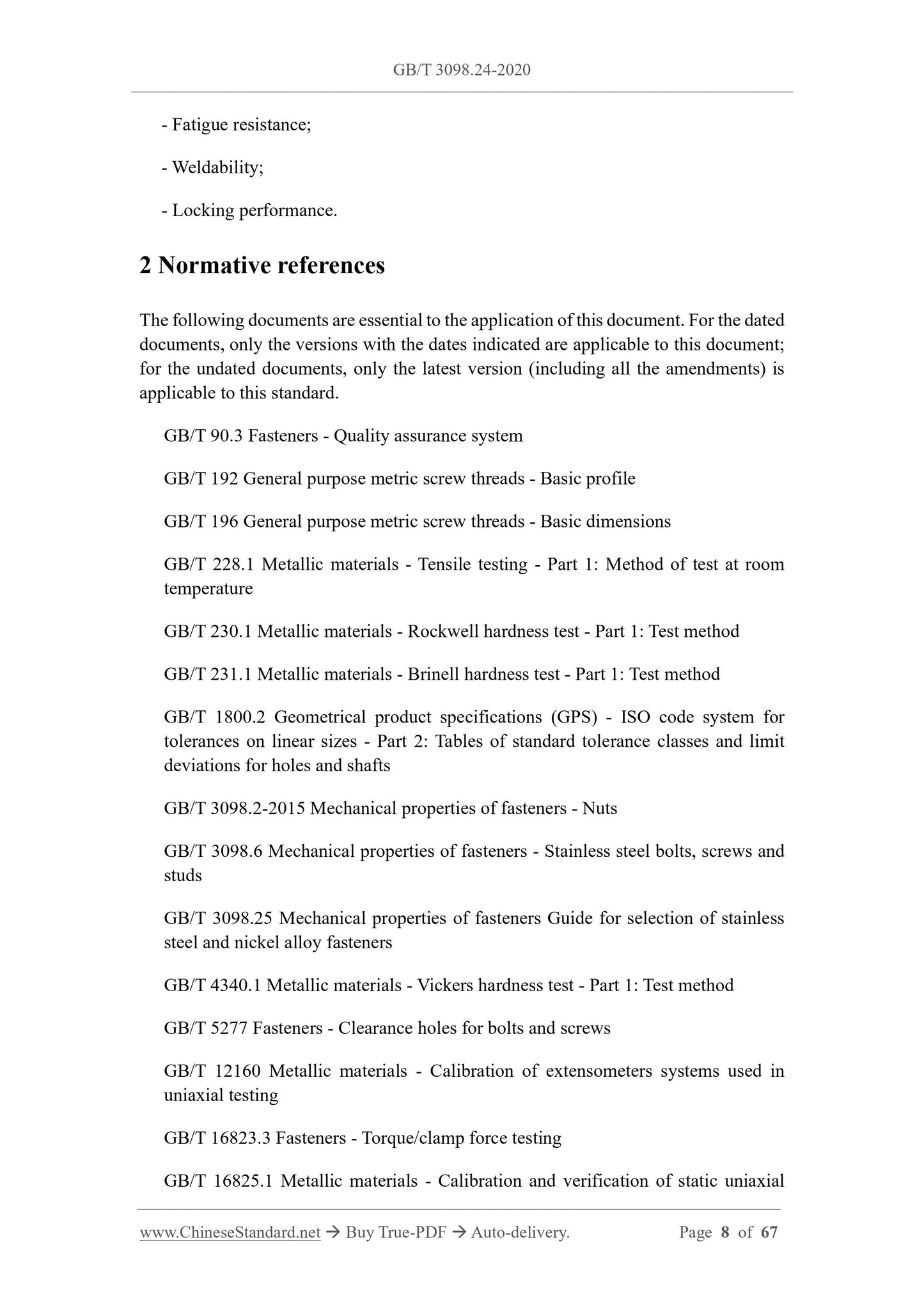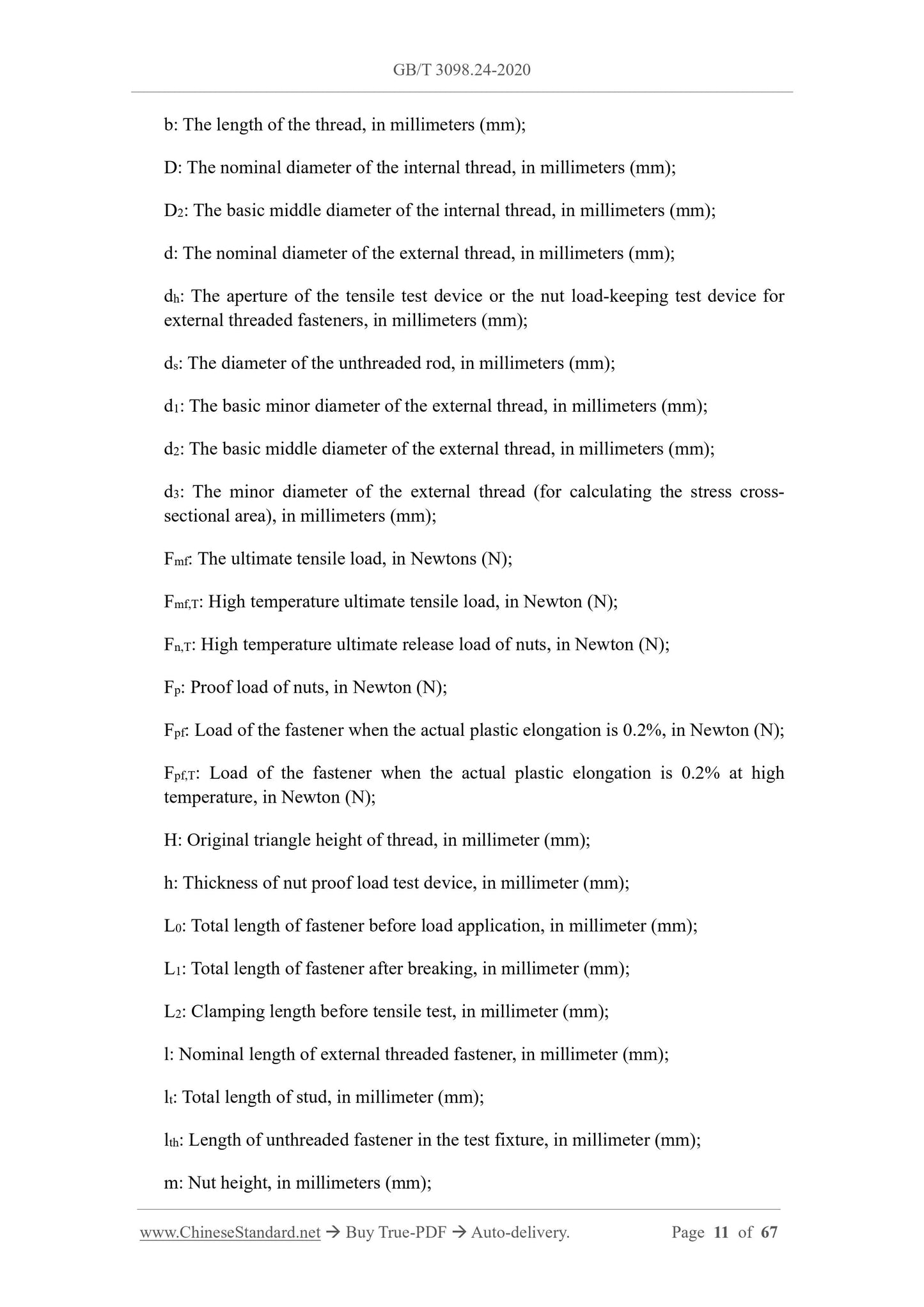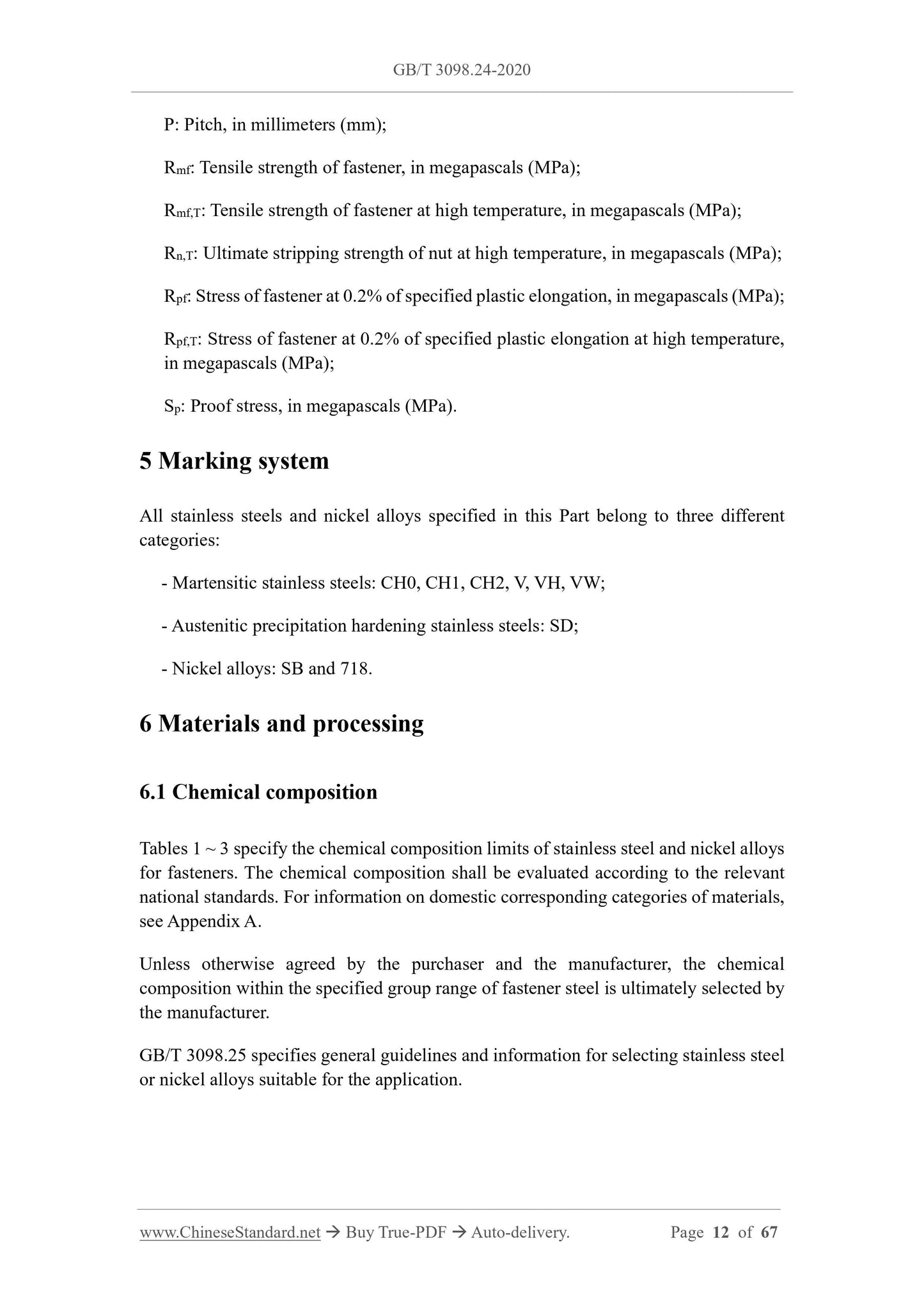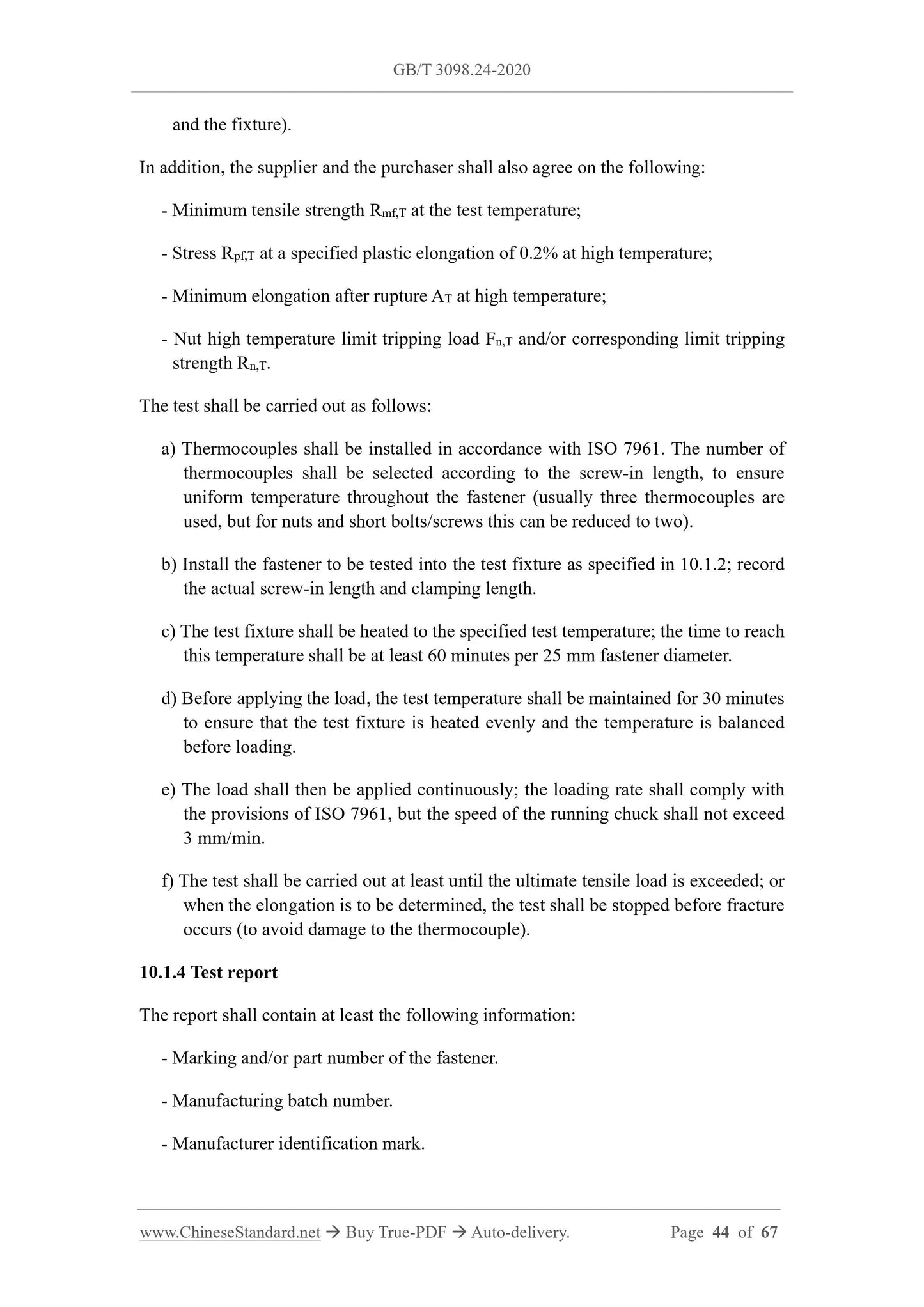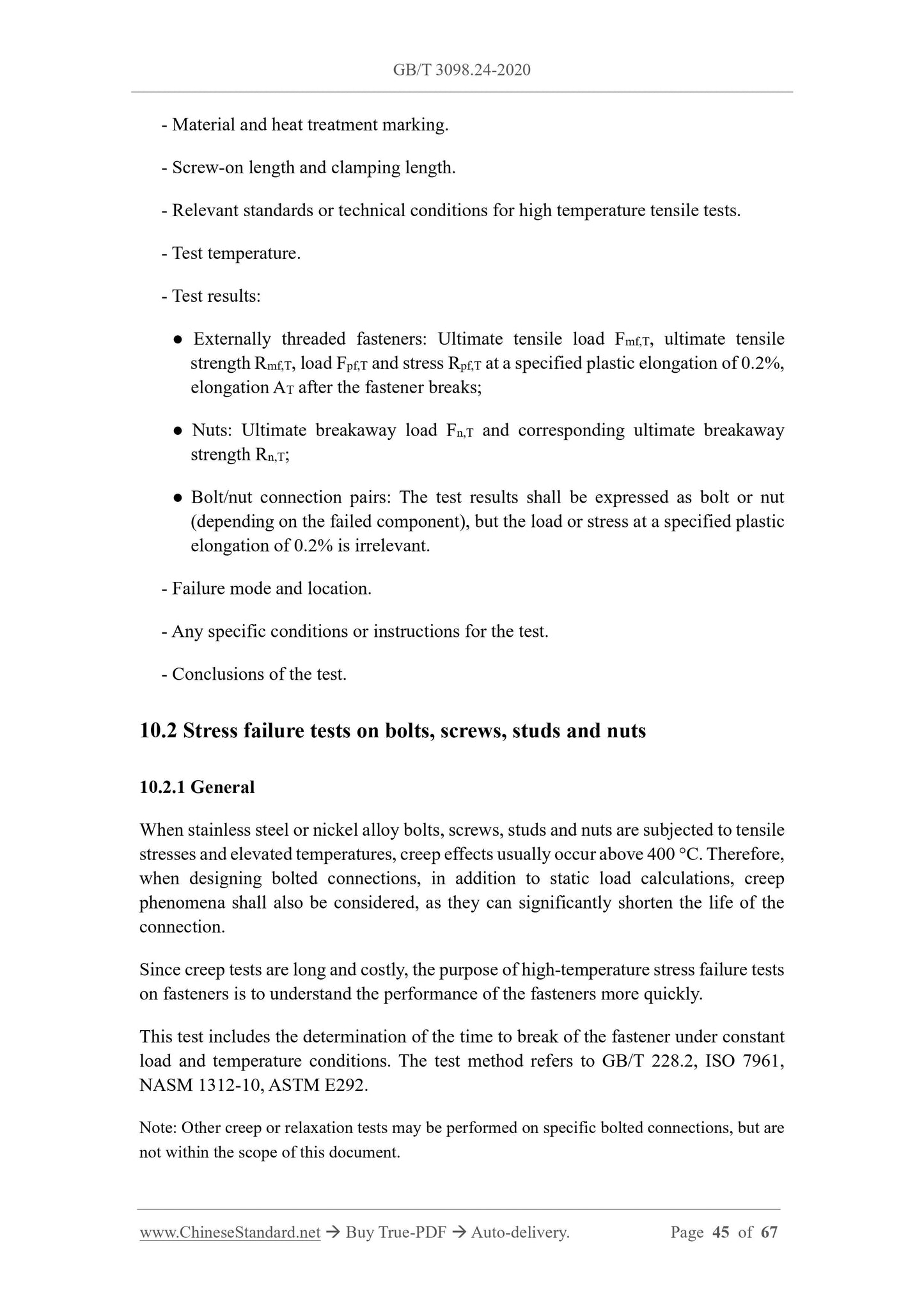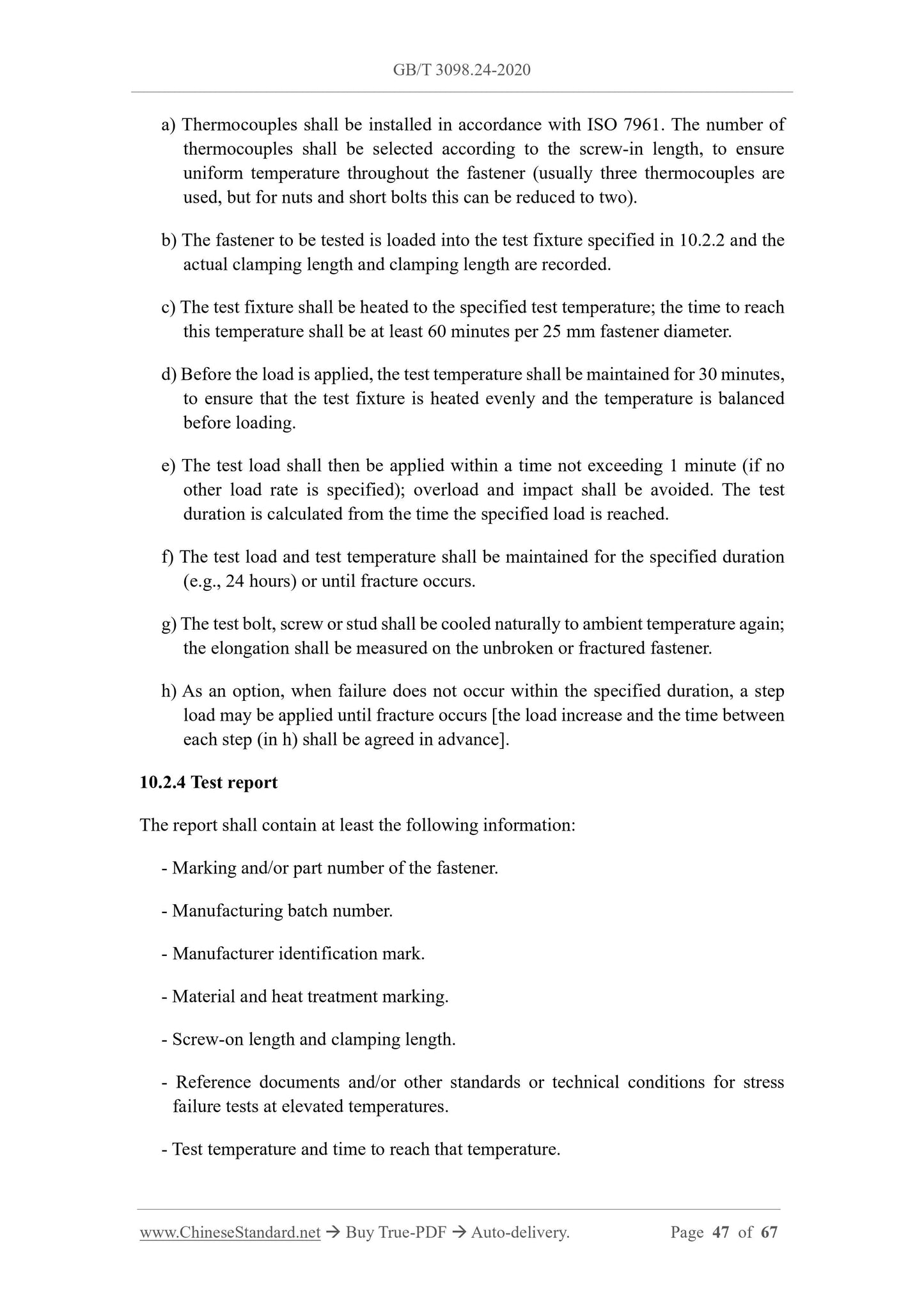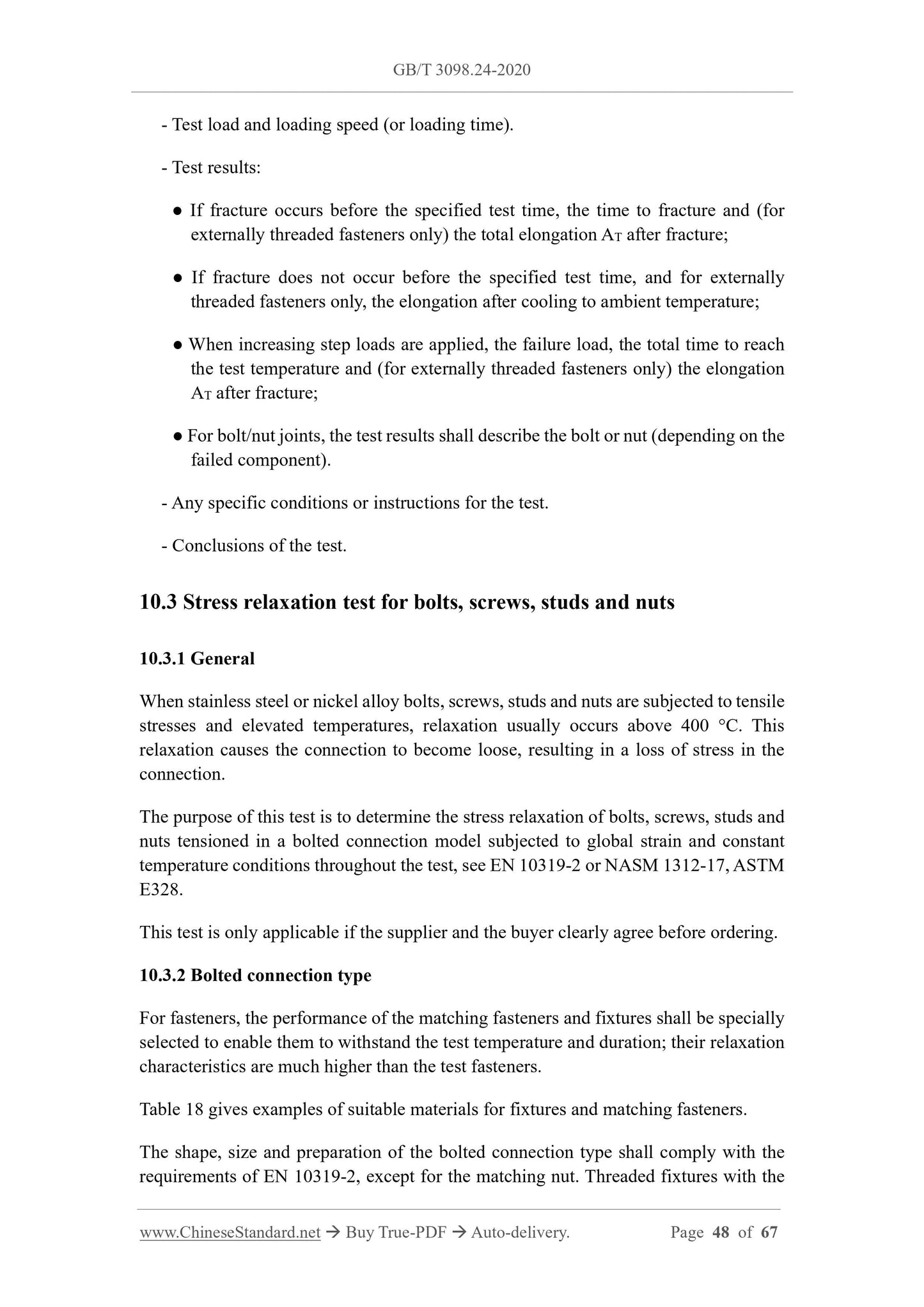1
/
of
12
www.ChineseStandard.us -- Field Test Asia Pte. Ltd.
GB/T 3098.24-2020 English PDF (GB/T3098.24-2020)
GB/T 3098.24-2020 English PDF (GB/T3098.24-2020)
Regular price
$680.00
Regular price
Sale price
$680.00
Unit price
/
per
Shipping calculated at checkout.
Couldn't load pickup availability
GB/T 3098.24-2020: Mechanical properties of fasteners - Stainless steel and nickel alloys bolts, screws, studs and nuts for high temperature applications
Delivery: 9 seconds. Download (and Email) true-PDF + Invoice.Get Quotation: Click GB/T 3098.24-2020 (Self-service in 1-minute)
Newer / historical versions: GB/T 3098.24-2020
Preview True-PDF
Scope
This Part of GB/T 3098 specifies the mechanical property requirements of bolts, screws,studs and nuts made of corrosion-resistant stainless steel and nickel alloys, for use at
high temperatures up to 800 °C when tested at an ambient temperature of 10 °C ~ 35 °C.
Note. The fasteners specified in this Part are also suitable for use at low temperatures, usually
to -50 °C. For more information, see GB/T 3098.25.
This Part specifies the properties of fasteners made of three types of materials.
martensitic stainless steel, austenitic precipitation hardening stainless steel, nickel
alloys. GB/T 3098.25 provides general rules and additional technical information on
applicable stainless steel and nickel alloys and their properties.
Fasteners applicable to this Part.
- Ordinary threads in accordance with GB/T 192;
- Combinations of diameter and pitch in accordance with GB/T 193;
- Tolerances in accordance with GB/T 197 and GB/T 9145;
- Coarse thread M3 ~ M39; fine thread M8 × 1 ~ M39 × 3;
- Full load-bearing capacity fasteners of any shape.
The provisions of this Part also apply to fasteners whose dimensions exceed the
applicable range but meet all use requirements.
This Part does not cover fasteners with reduced load-bearing capacity (such as thin nuts
and bolts, screws and studs whose head and shank strength is lower than that of the
threaded part).
This Part does not specify the following performance requirements.
- Torque-clamping force performance;
- Shear strength;
- Fatigue resistance;
- Weldability;
- Locking performance.
Basic Data
| Standard ID | GB/T 3098.24-2020 (GB/T3098.24-2020) |
| Description (Translated English) | Mechanical properties of fasteners - Stainless steel and nickel alloys bolts, screws, studs and nuts for high temperature applications |
| Sector / Industry | National Standard (Recommended) |
| Classification of Chinese Standard | J13 |
| Word Count Estimation | 47,459 |
| Date of Issue | 2020-11-19 |
| Date of Implementation | 2021-06-01 |
| Regulation (derived from) | National Standard Announcement No. 26 of 2020 |
| Issuing agency(ies) | State Administration for Market Regulation, China National Standardization Administration |
Share
